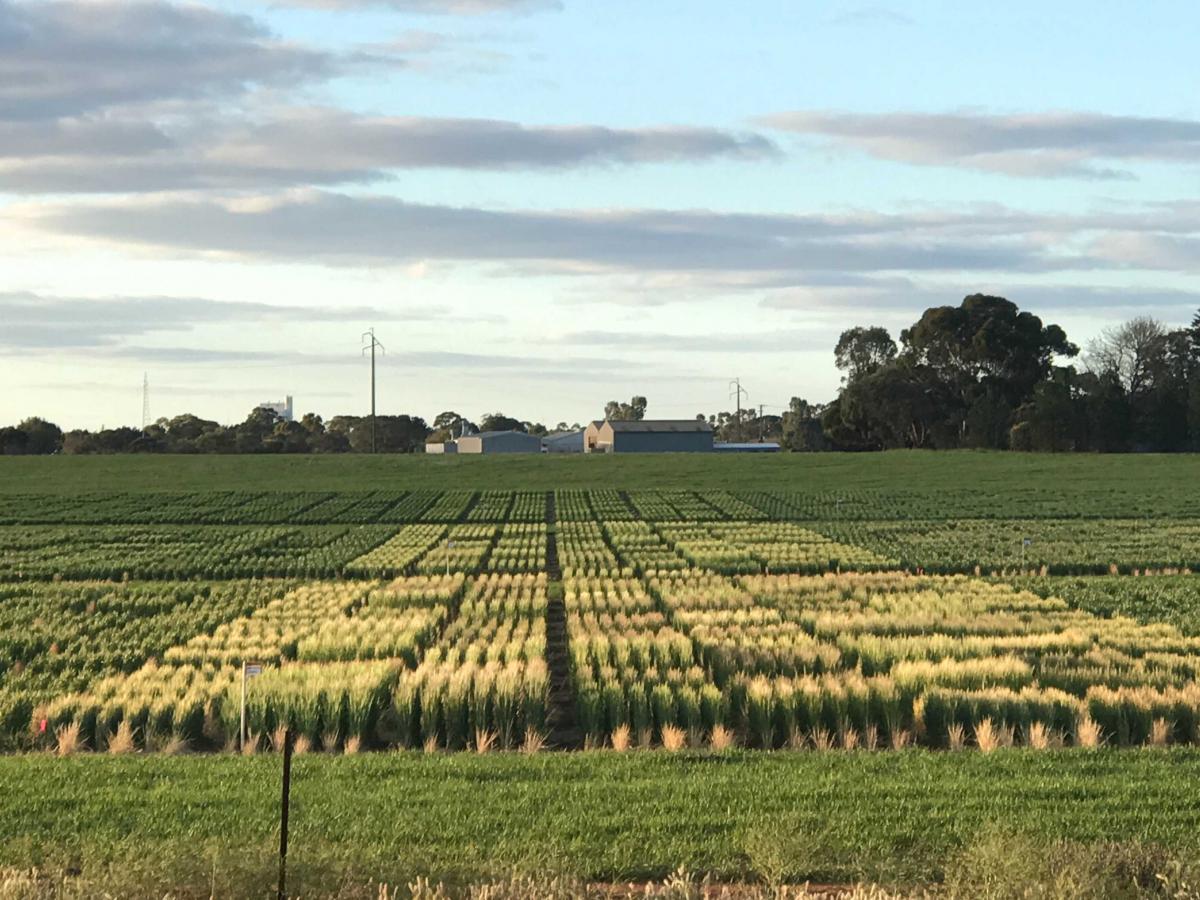Minimising the impact of frost-bite on Aussie crops

Image illustrating the general appearance of the frost nursery including different experiments and multiple times of sowing in Loxton, South Australia.
Spring radiation frost is estimated to cost Australian grain growers $360 million in direct and indirect losses every year.
In a paper published in Frontiers in Plant Science, researchers at the University of Adelaide and the University of Wollongong have ranked the susceptibility to frost damage in wheat and barley germplasm (seed and tissues) under frost prone landscapes across Australia.
“The results presented in this study provide information breeding programs and growers can use as a foundation to develop wheat and barley varieties with improved susceptibility to spring radiation frost.”Professor Jason Able
The researchers applied a novel detailed statistical framework to an extensive, multi-environment data-set, spanning multiple sowing times of wheat and barley across South Australia, New South Wales and Western Australia between 2010 and 2019.
The analysis could aid growers and plant breeders in identifying the most well-adapted varieties for breeding programs, and help to circumvent significant economic losses due to frost damage to grain crops.
Dr Ariel Ferrante from the University of Adelaide’s School of Agriculture, Food and Wine said: “Growers are not able to rapidly assess frost damage to crops due to the physical structure of the plants, so damage is not evident until several weeks after frost has occurred, when it may be too late to make decisions such as whether to cut for hay or to continue to harvest.
“To mitigate against yield loss and quality downgrades, growers usually sow their crops earlier but at the risk of exposing the reproductive organs of plants to the highest susceptibility of spring radiation frost.”
In the paper, the researchers were able to analyse the performance of varieties and advanced breeding lines of wheat and barley in response to frost in different environments across Australia.
Additionally, the relationship between plant performance in response to frost and plant height and spike length among varieties within different maturity groups was also investigated.
“Using this method, we have been able to show for the first-time genotypic differences to frost damage in barley, and we extended the pre-existing wheat data-set by three years,” said Dr Ferrante.
The analyses resulted in detecting genotypic differences to frost damage in response to different environments in more than 557,000 spikes, coming from 10,317 and 5,563 plots in wheat and barley across states, sites, multiple years and times of sowing.
Co-author and research supervisor, Professor Jason Able from the University of Adelaide’s School of Agriculture, Food and Wine, said, “The results presented in this study provide information breeding programs and growers can use as a foundation to develop wheat and barley varieties with improved susceptibility to spring radiation frost.”
Effective post-frost responses to minimise the impact of frost on yield, stability and profit is crucial to assist growers and breeding programs to make informed decisions regarding extracting value from frosted crops.
The research was supported by the Grains, Research and Development Corporation within its National Frost Initiative, which aims to provide the Australian grains industry with targeted research, development and extension solutions to manage the impact of frost.
Dr Ariel Ferrante, Research Fellow, School of Agriculture, Food and Wine, The University of Adelaide. Phone: +61 (0) 477 882 269, Email: ariel.ferrante@adelaide.edu.au
Kelly Brown, Communications Coordinator, The University of Adelaide. Mobile: +61 (0) 455 888 133, Email: k.brown@adelaide.edu.au
